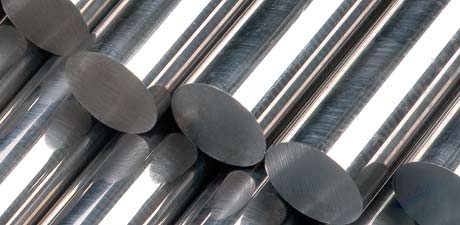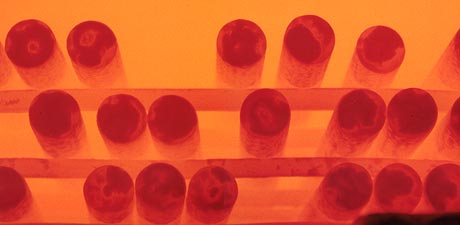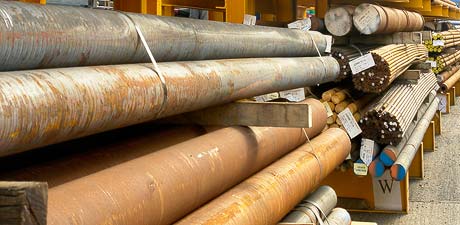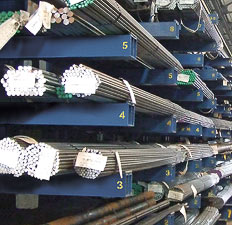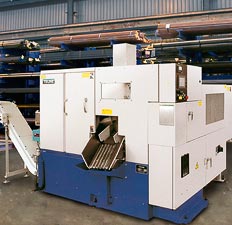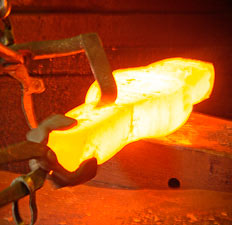Technical Data
Metallurgical Terms
Temper Colours.
The colour of the oxide layer which forms on heating bright steel at temperatures of the order of 200°C to 400°C. It is sometimes used as an indication of the temperature when tempering hardened tool steel, the colours changing with increase of temperature. Approximate temperatures for plain carbon steels are:-
| Light Straw | 210°C |
| Straw | 225°C |
| Dark Straw | 240°C |
| Yellow Brown | 255°C |
| Red Brown | 265°C |
| Purple | 275°C |
| Violet | 285°C |
| Cornflower Blue | 295°C |
| Pale Blue | 310°C |
| Grey | 330°C |
The above temperatures apply to normal tempering times, but the formation of the oxide film, like the tempering operation itself, is affected to some extent by time, and tempering for an excessively long period, even at a temperature as low as 220°C, would eventually produce a temper colour which would pass from straw, through brown to purple. Higher temperatures are required to obtain the same colours in the corrosion and heat resisting steels.
Temper Rolling.
(See Skin Pass).
Tempering.
(a) The process of heating hardened, normalized, or mechanically worked steel at some temperature below the transformation range, and holding for a suitable time at that temperature. The object of tempering is to decrease the hardness and to increase the toughness. (See also Stress Relieving).
(b) Preparing the clay intended for the production of crucibles by treading it with the bare feet. (See also Temper).
Tensile Strength.
(Maximum Stress). (Ultimate Tensile Stress). The highest load applied in breaking a tensile test piece divided by the original cross-sectional area of the test piece.
Tensile Test.
A test in which specimens are subjected to an increasing tensile force until they fracture. A stress-strain curve may be plotted and the limit of proportionality, proof stress, yield point, tensile strength, elongation and reduction of area determined.
Terne Plate.
Steel sheet coated with a tin-lead alloy, the coating being carried out by the hot dip process.
Thermal Equilibrium Diagram.
(See Phase Diagram).
Thermal Expansion.
(See Coefficient of Expansion).
Thermal Hysteresis.
(See Transformation Range).
Thermocouple.
A device for measuring temperature in which two dissimilar conductors have a common junction where they make perfect electrical and thermal contact with each other. If the temperature of the common junction differs from that of the free ends, an electromotive force is developed in the system of a magnitude which is dependent on the temperature difference.
Ti.
Chemical symbol for titanium.
Time Temperature Transformation Curve.(TTT Curve).
An isothermal transformation diagram showing the time which austenite takes to transform isothermally at various temperatures between A3 and the commencement of martensite formation (Ms). It is sometimes known as an S-Curve, so called because for some steels, e.g., plain carbon steels, it represents a letter S in shape. The information given is useful in heat treatment practice, particularly for interrupted quenching, martempering and austempering.
Tough Fracture.
(See Fracture).
- < Previous
- 1
- 2
- 3
- Next >


